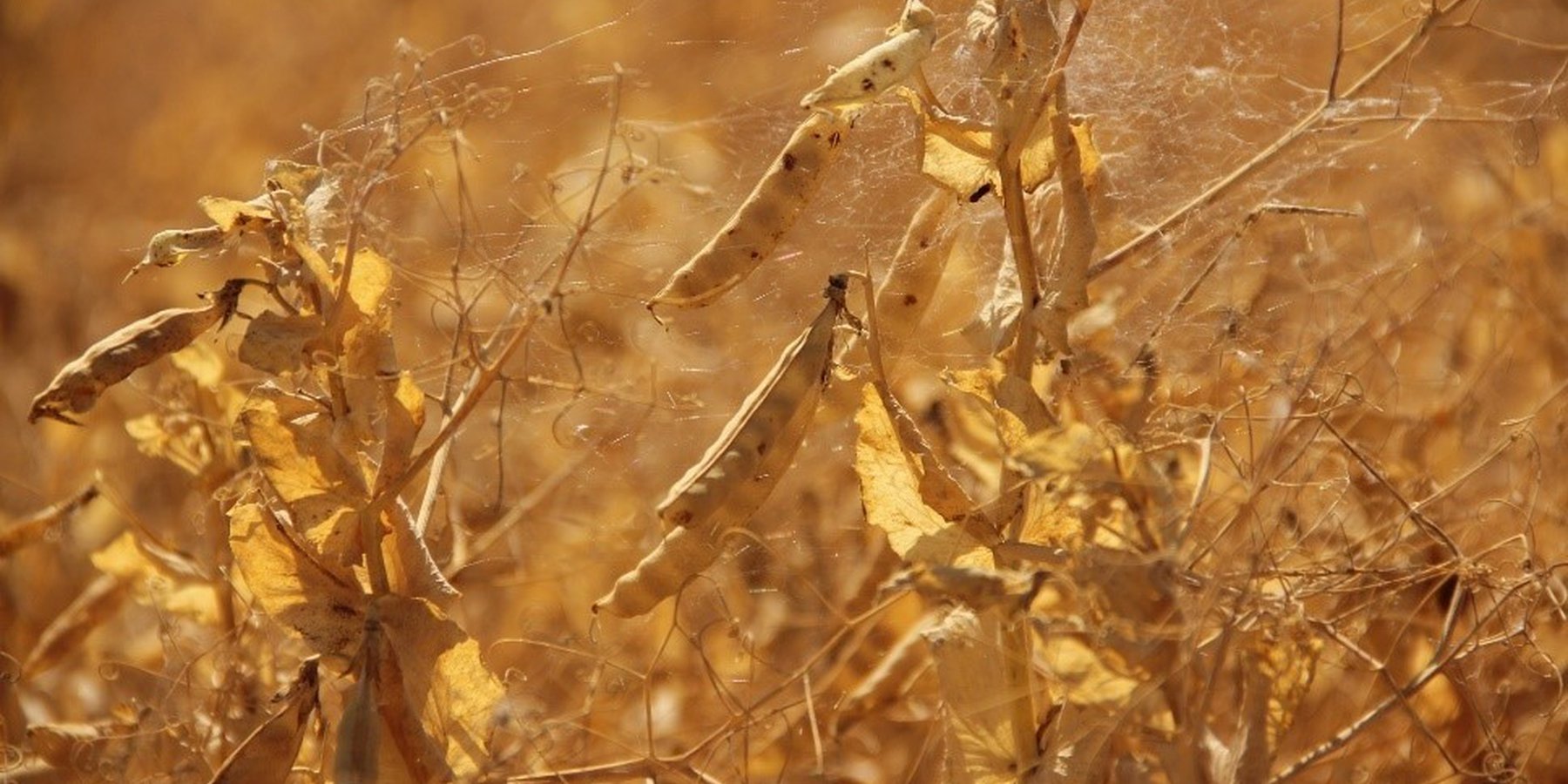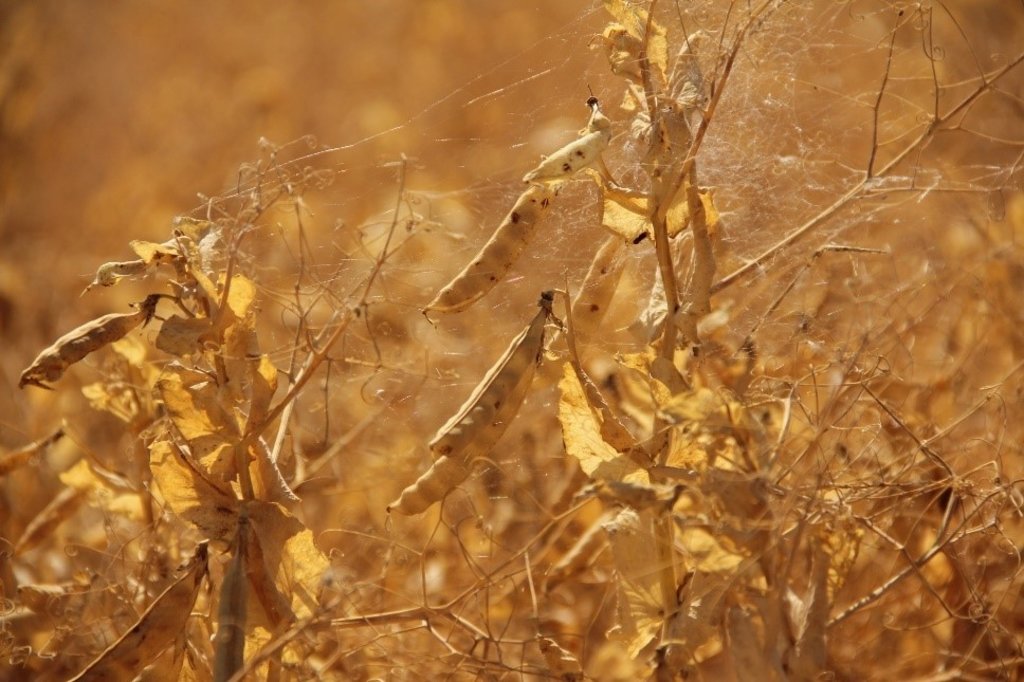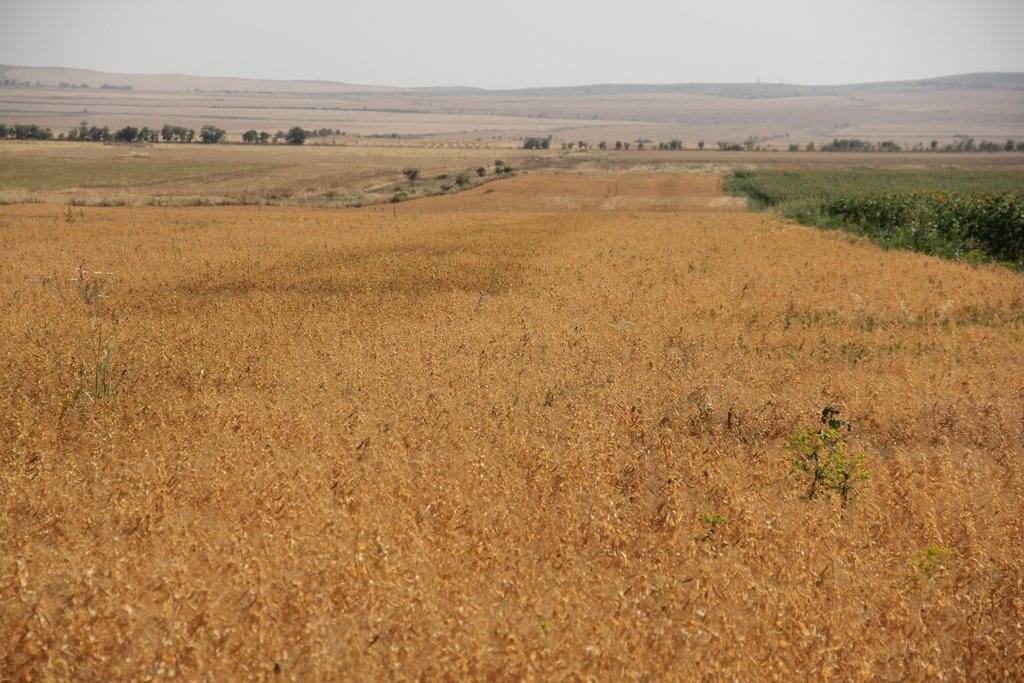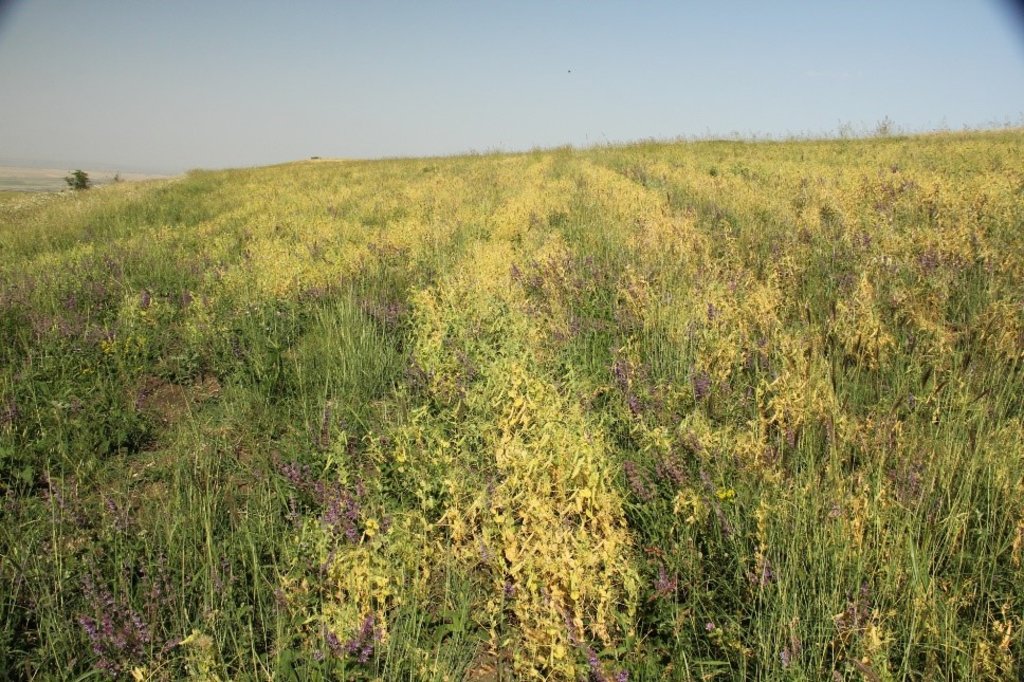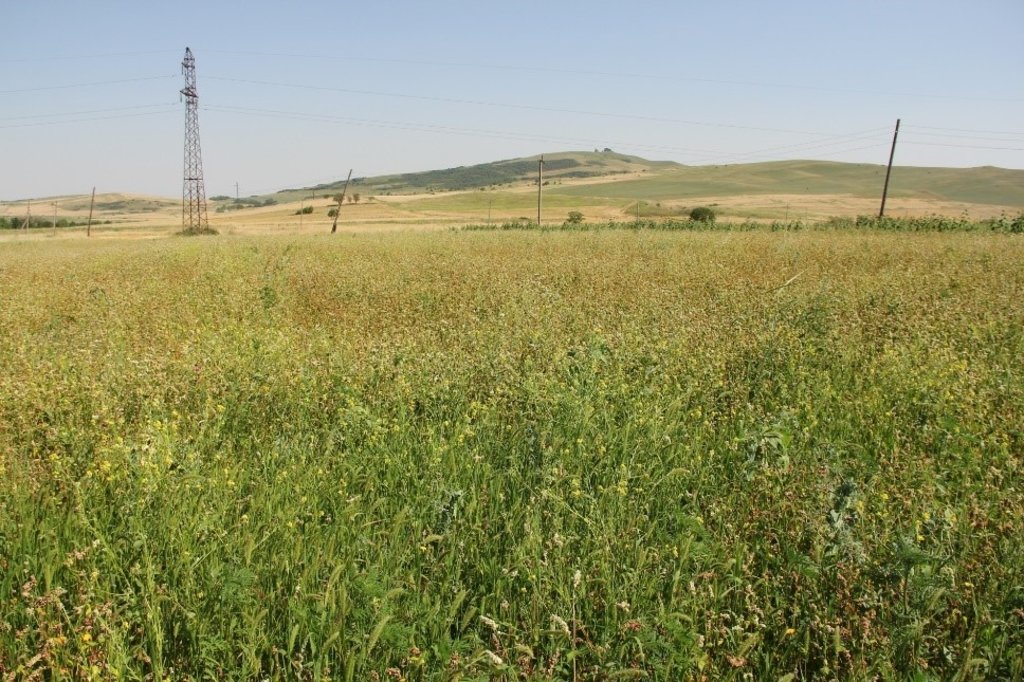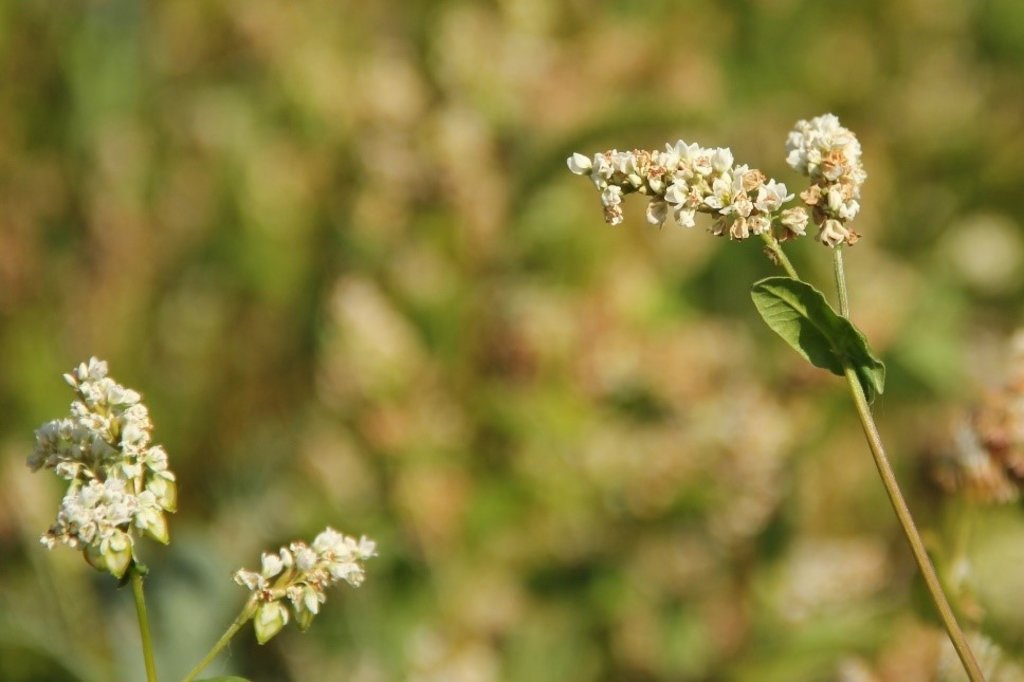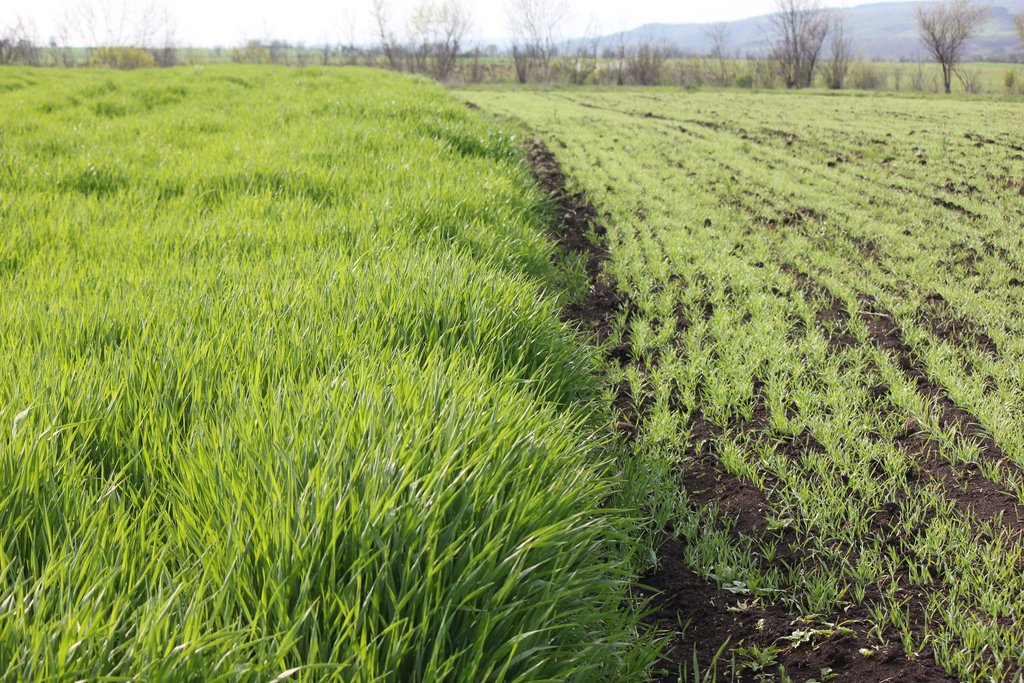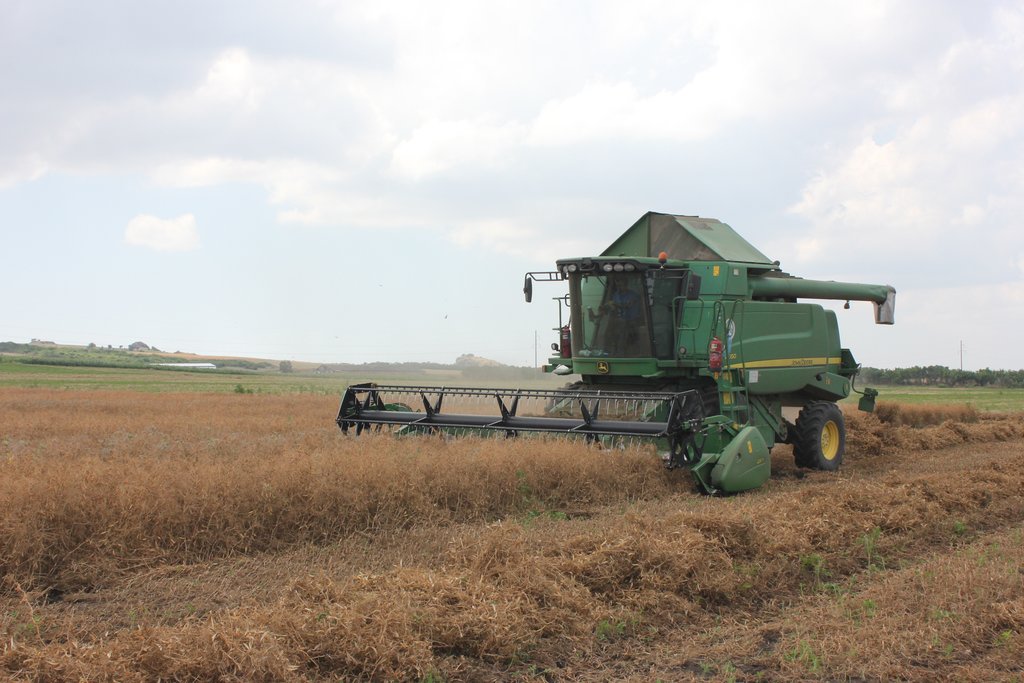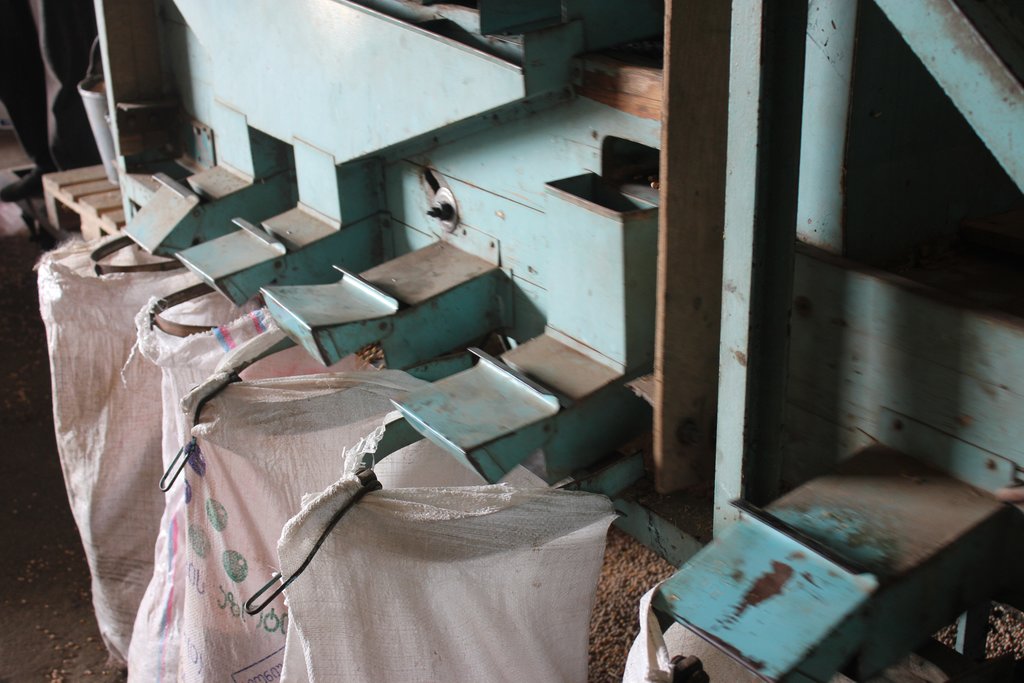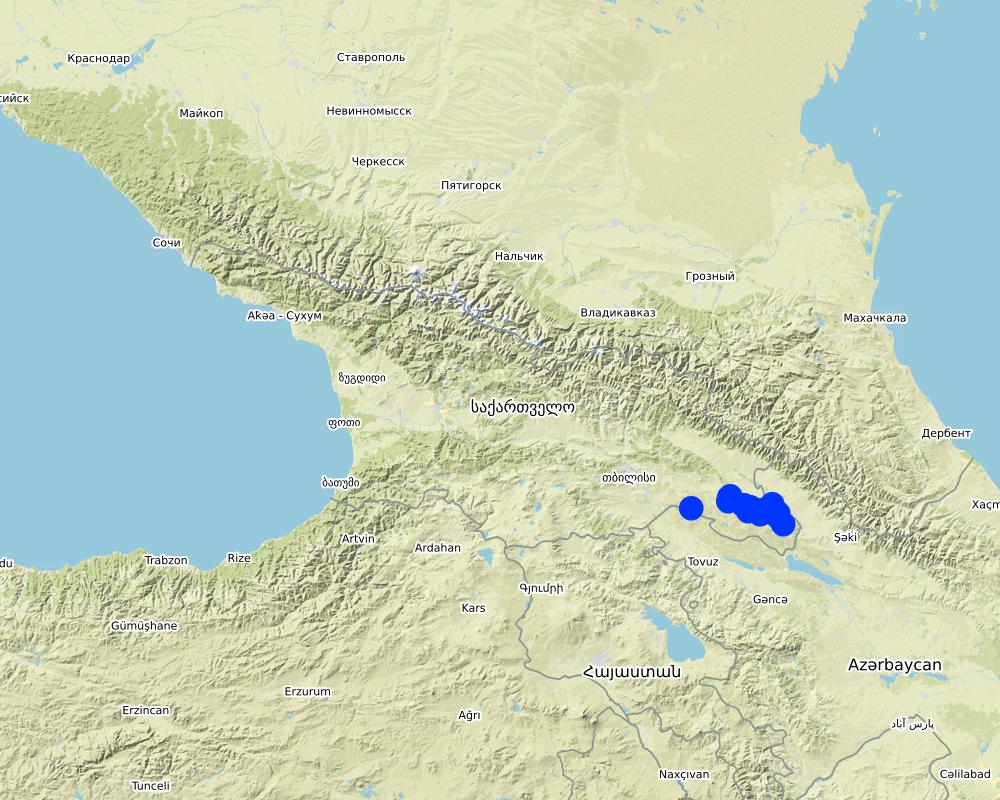Introduction of Crop Rotation [جورجيا]
- تاريخ الإنشاء:
- تحديث:
- جامع المعلومات: Hanns Kirchmeir
- المحرر: Kety Tsereteli
- المُراجع: Ursula Gaemperli
technologies_4275 - جورجيا
عرض الأقسام
توسيع الكل طي الكل1. معلومات عامة
1.2 تفاصيل الاتصال بالأشخاص الرئيسيين لمصدر المعلومات والمؤسسات المشاركة في تقييم وتوثيق التقنية
جامع المعلومات المشارك:
اسم المشروع الذي سهّل توثيق/تقييم التقنية (إذا كان ذلك على صلة)
Applying Landscape and Sustainable Land Management (L-SLM) for mitigating land degradation and contributing to poverty reduction in rural area (L-SLM Project)اسم المؤسسة (المؤسسات) التي سهلت توثيق/تقييم التقنية (إذا كان ذلك على صلة)
Regional Environmental Centre for the Caucasus (REC Caucasus) - جورجيا1.3 الشروط المتعلقة باستخدام البيانات الموثقة من خلال WOCAT
يوافق جامع المعلومات والشخص (لاشخاص) الرئيسي لمصدر المعلومات على الشروط المتعلقة باستخدام البيانات الموثقة من خلال WOCAT:
نعم
1.4 إعلان بشأن استدامة التقنية الموصوفة
هل التقنية الموصوفة هنا تمثل مشكلة فيما يتعلق بتدهور الأراضي، بحيث لا يمكن إعلانها تقنية مستدامة لإدارة الأراضي؟:
كلا
2. وصف تقنيةالإدارة المستدامي للأراضي
2.1 وصف مختصر للتقنية
تعريف التقنية:
In the municipality of Dedoplistskaro, Georgia, 100 ha of land have been cultivated with peas on approx. 25 fields (each 1-10 ha in size). The introduction of peas as an alternative crop that is now used in rotation with wheat, helps to increase soil fertility sustainable and ecologically.
2.2 وصف تفصيلي للتقنية
الوصف:
Dedoplistskaro is located in the Shiraki Plain, in eastern Georgia, and consists of steppes, where grain crops are cultivated and livestock is grazed in the winter. The steppic soils are dominated by Chernozems and Kastanozems, the climate is warm and temperate and the small-scale land (2-5 ha) is in individual ownership. The labour including plowing, seeding and harvesting is fully mechanised, the machines are mainly borrowed from agricultural machinery cooperatives and less often from private machinery suppliers. For the inhabitants of Dedoplistskaro municipality, agricultural production is an important source of income. 74% of the Georgian wheat production is located in the Kakheti region. Shiraki valley has a great share of this. The area of wheat production in Dedoplistskaro is 13,693 ha (Census 2014). Securing the productivity of arable land and stopping degradation due to the loss of soil fertility is of local and national importance. The introduction of pea as an alternative crop, which can be used in rotation with wheat or other crops, should help to increase soil fertility in a sustainable and ecologically viable way. Pea is a plant from the legume plant family. The root system of Pea can thus fix nitrogen from air by symbiotic bacteria. This helps to increase the C/N ratio in the soil leading to higher decay rates of organic carbon (e.g. from straw residuals) and higher fertility of soils. Most farmers sowed on 23 and 24 March 2018 - some until 29 March 2018. Later sowing led to lower yields.
2.3 صور التقنية
2.5 البلد/المنطقة/المواقع التي تم تنفيذ التقنية فيها والتي يغطيها هذا التقييم
البلد:
جورجيا
المنطقة/الولاية/المحافظة:
Kakheti
مزيد من التفاصيل حول الموقع:
Dedoplistskaro
حدد انتشار التقنية:
- منتشرة بالتساوي على مساحة
إذا كانت التقنيةا موزعة بالتساوي على منطقة ما، حدد المساحة المغطاة (بالكيلومتر المربع):
1,0
هل يقع موقع/مواقع التقنية في منطقة محمية بشكل دائم؟:
كلا
Map
×2.6 تاريخ التنفيذ
اذكر سنة التنفيذ:
2018
2.7 إدخال التقنية
حدد كيف تم إدخال التقنية:
- من خلال المشاريع/ التدخلات الخارجية
3. تصنيف تقنية الإدارة المستدامي للأراضي
3.1 الغرض الرئيسي ( الأغراض الرئيسية) للتقنية
- تحسين الإنتاج
- الحد من تدهور الأراضي ومنعه وعكسه
- خلق أثر اقتصادي مفيد
3.2 نوع (أنواع) استخدام الأراضي الحالية حيث يتم تطبيق التقنية
استخدامات الأراضي مختلطة ضمن نفس وحدة الأرض:
كلا

الأراضي الزراعية
- زراعة سنوية
الزراعة السنوية - حدد المحاصيل:
- الحبوب - قمح (ربيعي)
- الحبوب البقولية والبقول- البازلاء
- buckwheat
عدد مواسم الزراعة في السنة:
- 1
هل يتم ممارسة الزراعة البينية؟:
كلا
هل تتم ممارسة تناوب المحاصيل؟:
نعم
إذا كانت الإجابة بنعم، حدد:
Crop rotations with wheat, pea and buckwheat. Different systems, one example: Year 1: Wheat, Year 2: Pea, Year 3: Wheat, Year 4: Wheat, Year 5: Buckwheat, Year 6: Wheat, Year 7: Wheat, Year 8: Pea, Year 9: Wheat
التعليقات:
Before the implementation of the technology wheat was cultivated without intercropping or crop rotation.
3.3 هل تغير استخدام الأراضي نتيجة لتنفيذ التقنية؟
هل تغير استخدام الأراضي نتيجة لتنفيذ التقنية؟:
- نعم (يرجى ملء الأسئلة أدناه فيما يتعلق باستخدام الأراضي قبل تنفيذ التقنية)
استخدامات الأراضي مختلطة ضمن نفس وحدة الأرض:
كلا

الأراضي الزراعية
- زراعة سنوية
الزراعة السنوية - حدد المحاصيل:
- الحبوب - قمح (ربيعي)
هل تتم ممارسة تناوب المحاصيل؟:
كلا
التعليقات:
It is envisaged to continue with crop rotation in the following years.
3.4 إمدادات المياه
إمدادات المياه للأرض التي يتم تنفيذ التقنية عليها:
- بعلية
3.5 مجموعةالإدارة المستدامة للأراضي التي تنتمي إليها هذه التقنية
- أنظمة التناوب (تعاقب المحاصيل، البور، الزراعة المتنقلة)
3.6 التدابير التقنية في مجال إلادارة المستدامة للأراضي

التدابير الزراعية
- A2: المادة العضوية/خصوبة التربة
التعليقات:
The nitrogen fixing capabilities of the pea-roots will increase fertility of the soil additionally to the crop-rotation effect.
3.7 الأنواع الرئيسية من تدهور الأراضي التي تناولتها التقنية

التدهور الكيميائي للتربة
- (Cn): تراجع الخصوبة وانخفاض محتوى المادة العضوية (غير ناتج عن الانجراف)
التعليقات:
The permanent cultivation of wheat on the same field leads to degradation of fertility.
3.8 منع أو حد أو عكس تدهور الأراضي
تحديد هدف التقنية فيما يتعلق بتدهور الأراضي:
- منع تدهور الأراضي
- الحد من تدهور الأراضي
التعليقات:
The crop rotation will reduce and/or prevent from land degradation by permanent wheat cultivation.
4. المواصفات الفنية، وأنشطة التنفيذ، والمدخلات، والتكاليف
4.1 الرسم الفني للتقنية
المواصفات الفنية (المتعلقة بالرسم الفني):
Proposed rotation schema for wheat, pea and buckwheat
المؤلف:
Hanns Kirchmeir
التاريخ:
07/02/2018
4.2 معلومات عامة بخصوص حساب المدخلات والتكاليف
حدد كيفية احتساب التكاليف والمدخلات:
- حسب مساحة تنفيذ التقنية
الإشارة إلى حجم ووحدة المساحة:
100 ha
حدد العملة المستخدمة لحساب التكاليف:
- دولار أمريكي USD
اذكر متوسط تكلفة أجر العمالة المستأجرة في اليوم الواحد:
20
4.3 أنشطة التأسيس
| النشاط | التوقيت (الموسم) | |
|---|---|---|
| 1. | Selection of farmers and fields according to the selection schema and signed subsidy contracts to all farmers | Until January 2018 |
| 2. | Scientific assessment of soil fertility before seeding | October 2017-Novembver 2018 |
| 3. | Seeding, maintaining and harvesting | March-October 2018 |
| 4. | Scientific assessment of soil fertility before seeding | October 2018 |
4.4 التكاليف والمدخلات اللازمة للتأسيس
| تحديد المدخلات | الوحدة | الكمية | التكاليف لكل وحدة | إجمالي التكاليف لكل مدخل | % من التكاليف التي يتحملها مستخدمو الأراضي | |
|---|---|---|---|---|---|---|
| العمالة | plowing | ha | 100,0 | 35,71 | 3571,0 | 40,0 |
| العمالة | harrowing | ha | 100,0 | 14,29 | 1429,0 | 40,0 |
| العمالة | seeding | ha | 100,0 | 8,93 | 893,0 | 40,0 |
| العمالة | harvesting | ha | 100,0 | 35,71 | 3571,0 | 40,0 |
| المواد النباتية | pea-seeds (250kg) | ha | 100,0 | 133,93 | 13393,0 | 40,0 |
| الأسمدة والمبيدات الحيوية | herbicide (1l) | ha | 100,0 | 5,36 | 536,0 | 40,0 |
| إجمالي تكاليف إنشاء التقنية | 23393,0 | |||||
| إجمالي تكاليف إنشاء التقنية بالدولار الأمريكي | 23393,0 | |||||
إذا تحمل مستخدم الأرض أقل من 100% من التكاليف، حدد من قام بتغطية التكاليف المتبقية:
60% of the cost have been added as a subsidy payed from GEF project funds.
التعليقات:
The funding was organised in a public call. Farmers from the Dedoplitskaro region have been invited to apply for a 60% co funding of the pea/buckwheat planting.
The costs stated in the section "Labour" for plowing, harrowing, seeding and harvesting include costs for labour and for equipment. The work was done partly by the farmers themselves and partly by an agricultural contractor such as for driving the harvester. The machines are mainly borrowed from a local machinery cooperative, but also from private machinery suppliers.
4.5 الصيانة/الأنشطة المتكررة
التعليقات:
The full production cycle (plowing, harrowing, seeding, harvesting including the application of pesticide have been included in the 'establishment' section.
4.6 التكاليف والمدخلات اللازمة للصيانة/للأنشطة المتكررة (سنويًا)
التعليقات:
The full production cycle (plowing, harrowing, seeding, harvesting including the application of pesticide have been included in the 'establishment' section.
4.7 أهم العوامل المؤثرة على التكاليف
قدم وصفا لأهم العوامل التي تؤثر على التكاليف:
It was a challenge to organised the high amount of pea-seeds, as they are not commonly available in the region.
5. البيئة الطبيعية والبشرية
5.1 المناخ
هطول الأمطار السنوي
- < 250 مم
- 251- 500 ملم
- 501 - 750ملم
- 1,000-751 ملم
- 1,500-1,100 ملم
- 2,000-1,500 ملم
- 3,000-2,001 ملم
- 4,000-3,100 ملم
- > 4000 ملم
حدد متوسط هطول الأمطار السنوي (إذا كان معروفًا)، بالملليمتر:
697,00
المواصفات/التعليقات على هطول الأمطار:
The driest month is January, with 25 mm of rainfall. The greatest amount of precipitation occurs in June, with an average of 108 mm. The difference in precipitation between the driest month and the wettest month is 83 mm.
الإشارة إلى اسم محطة الأرصاد الجوية المرجعية المعنية:
Dedoplistskaro Met. Station
المنطقة المناخية الزراعية
- شبه قاحلة
The climate is warm and temperate in Dedoplistskaro. The average annual temperature in Dedoplistskaro is 11.3 °C. The warmest month of the year is July, with an average temperature of 22.7 °C. The lowest average temperatures in the year occur in January, when it is around 0.1 °C.
5.2 طوبوغرافيا
متوسط الانحدارات:
- مسطح (0-2%)
- بسيط (3-5%)
- معتدل (6-10%)
- متدحرج (11-15%)
- تلال (16-30%)
- شديدة الانحدار(31-60%)
- فائقة الانحدار (>60%)
التضاريس:
- هضاب/سهول
- أثلام مرتفعة
- المنحدرات الجبلية
- منحدرات التلال
- منحدرات في السفوح
- قاع الوادي
المنطقة الارتفاعية:
- 100-0 متر فوق سطح البحر
- 500-101 متر فوق سطح البحر
- 1,000-501 متر فوق سطح البحر
- 1,500-1,001 متر فوق سطح البحر
- 2,000-1,501 متر فوق سطح البحر
- 2,500-2,100 متر فوق سطح البحر
- 3,000-2,501 متر فوق سطح البحر
- 4,000-3,001 متر فوق سطح البحر
- > 4000 متر فوق سطح البحر
وضح ما إذا كانت التقنية مطبقة على وجه التحديد في:
- غير ذات صلة
5.3 التربة
متوسط عمق التربة:
- ضحل جدًا (0-20 سم)
- ضحلة (21-50 سم)
- متوسطة العمق (51-80 سم)
- عميقة (81-120 سم)
- عميقة جدًا (> 120 سم)
قوام التربة (التربة السطحية):
- ناعم/ثقيل (طيني)
قوام التربة (> 20 سم تحت السطح):
- ناعم/ثقيل (طيني)
المواد العضوية في التربة السطحية:
- عالية (>3%)
إذا كان متاحًا، قم بإرفاق وصف كامل للتربة أو تحديد المعلومات المتوفرة، على سبيل المثال نوع التربة، الرقم الهيدروجيني/ درجة حموضة التربة، قدرة التبادل الكاتيوني، النيتروجين، الملوحة وما إلى ذلك.
In the region steppic soils are dominating (Chernozems and Kastanozems)
5.4 توافر المياه ونوعيتها
منسوب المياه الجوفية:
50-5 م
توافر المياه السطحية:
ضعيف/ غير متوافر
نوعية المياه (غير المعالجة):
مياه الشرب سيئة (تتطلب معالجة)
تشير جودة المياه إلى:
المياه الجوفية
هل تعتبر ملوحة الماء مشكلة؟:
كلا
هل تحدث فيضانات في المنطقة؟:
كلا
5.5 التنوع البيولوجي
تنوع الأنواع:
- منخفض
تنوع الموائل:
- منخفض
التعليقات والمواصفات الإضافية بشأن التنوع البيولوجي:
The landscape is intensively used by agricultural purpose. The former network of windbreaks was massively reduced in the last decades. Re-establishing could support the habitat diversity significantly.
5.6 خصائص مستخدمي الأراضي الذين يطبقون التقنية
مستقر أو مرتحل:
- غير المترحل
التوجه السوقي لنظام الإنتاج:
- مختلط (كفاف/ تجاري)
الدخل من خارج المزرعة:
- أقل من % 10من كامل الدخل
المستوى النسبي للثروة:
- ضعيف
أفراداً أو مجموعات:
- فرد/أسرة معيشية
مستوى المكننة:
- ميكانيكية/ مزودة بمحرك
الجنس:
- رجال
عمر مستخدمي الأرضي:
- متوسط العمر
اذكر الخصائص الأخرى ذات الصلة لمستخدمي الأراضي:
The local farmers-association was an important partner in promoting the imitative.
5.7 متوسط مساحة الأرض التي يستخدمها مستخدمو الأراضي الذين يطبقون التقنية
- < 0.5 هكتارا
- 0.5 - 1 هكتار
- 1 -2 هكتار
- 2 - 5 هكتار
- 5 - 15 هكتار
- 15 - 50 هكتار
- 50 - 100هكتار
- 500-100 هكتار
- 1,000-500 هكتار
- 10,000-1,000 هكتار
- > 10,000 هكتار
هل يعتبر هذا نطاقًا صغيرًا أو متوسطًا أو واسعا (في إشارة إلى السياق المحلي)؟:
- على نطاق صغير
5.8 ملكية الأراضي، وحقوق استخدام الأراضي، وحقوق استخدام المياه
ملكية الارض:
- فردية، لا يوجد سند ملكية
- فردية، يوجد سند ملكية
حقوق استخدام الأراضي:
- فردي
حقوق استخدام المياه:
- وصول مفتوح (غير منظم)
هل تعتمد حقوق استخدام الأراضي على نظام قانوني تقليدي؟:
كلا
5.9 الوصول إلى الخدمات والبنية التحتية
الصحة:
- ضعيف
- معتدل
- جيد
المساعدة التقنية:
- ضعيف
- معتدل
- جيد
العمل (على سبيل المثال خارج المزرعة):
- ضعيف
- معتدل
- جيد
الأسواق:
- ضعيف
- معتدل
- جيد
الطاقة:
- ضعيف
- معتدل
- جيد
الطرق والنقل:
- ضعيف
- معتدل
- جيد
مياه الشرب وخدمات الصرف الصحي:
- ضعيف
- معتدل
- جيد
الخدمات المالية:
- ضعيف
- معتدل
- جيد
6. الآثار والتصريحات الختامية
6.1 الآثار التي أظهرتها التقنية في الموقع
الآثار الاجتماعية والاقتصادية
الإنتاج
إنتاج المحاصيل
التعليقات/ حدد:
The average yield of peas 3 t/ha, 98 t pea yield was taken from the pilot plots. Some of the farmers will sow the peas in other plots to improve soil fertility on another land under their ownership. Buckwheat was sown only on 2 plots, 450 kg at all. The farmers who had opted for the concept of starting the crop rotation with buckwheat cultivated the green mass in the soil to improve their fertility. The harvest of peas/buckwheat was very variable between the different farmers depending on their timing of measures: 1. The farmers who could not use the possibility to seed the crops in March - 1 farmer, because of rainy weathers afterwards, seeded pea later , in the middle of April. This farmer could not get yield from the plot. The others (2-3 farmers) who could not harrow the soil after seeding (as we recommended to harrow), they got the small yield.
حدد تقييم الآثار في الموقع (القياسات):
When peas are used as a intercrop between winter wheat cultivation, this would have a positive effect on wind erosion. Since the implementation of the crop rotation just started in 2018, evidence-based further impacts are only expected in the following years, e.g. impacts on soil quality.
6.2 الآثار التي أظهرتها التقنية خارج الموقع
قيّم الآثار خارج الموقع (القياسات):
No off-site effects are expected.
6.4 تحليل التكلفة والعائد
كيف يمكن مقارنة العوائد نسبة لتكاليف الإنشاء (من وجهة نظر مستخدمي الأراضي)؟
عوائد قصيرة الأجل:
إيجابي
عوائد طويلة الأجل:
إيجابي
كيف تتم مقارنة العوائدمع كلفة الصيانة/التكاليف المتكررة (من وجهة نظر مستخدمي الأراضي)؟
عوائد قصيرة الأجل:
محايد/متوازن
عوائد طويلة الأجل:
محايد/متوازن
التعليقات:
Maintenance costs were not applied.
6.5 اعتماد التقنية
- 1-10%
من بين جميع الذين تبنوا التقنية، كم عدد الذين فعلوا ذلك بشكل تلقائي، أي دون تلقي أي حوافز مادية/مدفوعات؟:
- 10-0%
التعليقات:
It is a very new technology. But success of the first year will help to spread it across the region.
6.6 التكيف
هل تم تعديل التقنية مؤخرًا لتتكيف مع الظروف المتغيرة؟:
كلا
6.7 نقاط القوة / المزايا / الفرص التي توفرها التقنية
| نقاط القوة/ المزايا/ الفرص من وجهة نظر مستخدمي الأراضي |
|---|
| The project gave farmers the opportunity to try the new crops (peas and buckwheat) for the community of Dedoplistsakro, as they only sow wheat and barley over the years. They had the opportunity to get advice on how to sow peas and buckwheat and how to improve the soil fertility of their land. They invested through ploughing, harrowing and maintenance, as well as by taking over the yields. They were also interested in maintaining the yield from the proposed crops, using this seed for further plots next year and passing on the knowledge to other farmers. Some farmers sold harvested peas as forage, some gifted others for the same purposes to improve soil fertility. |
| The farmers, who sow the peas in time and cultivate them with appropriate agrotechnical measures, harvested 3.5-4t/ha. The profit was 12 250 - 14 000 GEL/ha. The yield rate was as follows: 3.5.5 t/ha yield - 4.8 yield rate; 4 t/ha --- 5.5 yield rate. |
|
The expected yield of barley per hectare in the years following pea sowing will be 7-9 tonnes. Income ratios - 9.6 for 7 t/ha yield; 12.4 for 9 t/ha yield. The expert calculated the expected yield on the basis of yield data from the davit Nateladze area in Dedoplistskaro, where peas were sown in 2017 and then 5.5 t barley/ha instead of 1.5 t barley/ha (in previous years before peas were sown) was harvested. As part of the pilot project, 23,750 kg of peas were sown on 92 ha in Dedoplistskaro in 2018. 98 t of peas were harvested in mid-July in the municipality of Dedoplistskaro. |
| نقاط القوة/ المزايا/ الفرص من وجهة نظر جامع المعلومات أو غيره من الاشخاص الرئيسيين لمصدر المعلومات |
|---|
| The machinery for preparing the soil and seeding are available. |
| Especially pea has a very positive effect on soil fertility. |
| Most of the farmers used the technology for next year(2019). They seeded the harvested pea in spring 2019 at another plots in Dedoplistsakro municipality (about 100 ha). This confirms the positive impact of the approach on soil fertility and guarantees the sustainability of the project. |
6.8 نقاط ضعف / مساوىء / مخاطر التقنية وسبل التغلب عليها
| نقاط الضعف/ المساوىء/ المخاطر من وجهة نظر مستخدم الأراضي | كيف يمكن التغلب عليها؟ |
|---|---|
| Some farmers (2-3) sow the pea later than others. They did not get a good yield because of the sowing in April. The reason for the delay was 1. rainy weather; 2. lack of machinery. Timely harvesting was also the problem because of the lack of machinery, since Dedoplistskaro is called the barn of wheat and there are not enough machines in the community. The problem of the realization of peas and buckwheat was also the problem because of the lack of companies for peas and buckwheat not only in the municipality but throughout the country. | The farmers asked for a support for the municipality in the development of such enterprises to process the mentioned crops for realization. |
| Of the 3 schemes proposed, 19 farmers choose the first scheme to sow the peas in the first year. The second scheme was not chosen at all. The 3rd scheme to start crop rotation in the 1st year with buckwheat was chosen by 2 farmers. A farmer ploughs the yield of buckwheat as a green mass in the soil and improves the fertility of the soil. Another harvested and prepared 120 hay presses. The farmers improved the soil, but the expenses were at 1 ha / 2 645 GEL, 1 press / 7 GEL, the income ratio 0,31. The sowing of buckwheat to prepare the press is ineffective to benefit from the harvest. The farmers who opted for the third scheme (start of croprotation with buckwheat) were geared towards improving soil fertility, but most farmers prefer to do the rotation in order to benefit from the yield. |
| نقاط الضعف/ المساوىء/ المخاطر من وجهة نظر جامع المعلومات أو غيره من الاشخاص الرئيسيين لمصدر المعلومات | كيف يمكن التغلب عليها؟ |
|---|---|
| There is no local marked or seller for peas and it is difficult to sell the product for the local farmers. | It needs national support to develop a pea-processing industry. |
7. المراجع والروابط
7.1 طرق جمع/مصادر المعلومات
- زيارات ميدانية، مسوحات ميدانية
Two field visits.
- مقابلات مع المتخصصين/الخبراء في الإدارة المستدامة للأراضي
Interviews with the implementing national field expert.
- التجميع من التقارير والوثائق الأخرى الموجودة
Documentation from the field expert
متى تم تجميع البيانات (ميدانيا)؟:
12/09/2018
الروابط والوحدات المواضيعية
توسيع الكل طي الكلالروابط
لا يوجد روابط
الوحدات المواضيعية
لا يوجد وحدات مواضيعية


